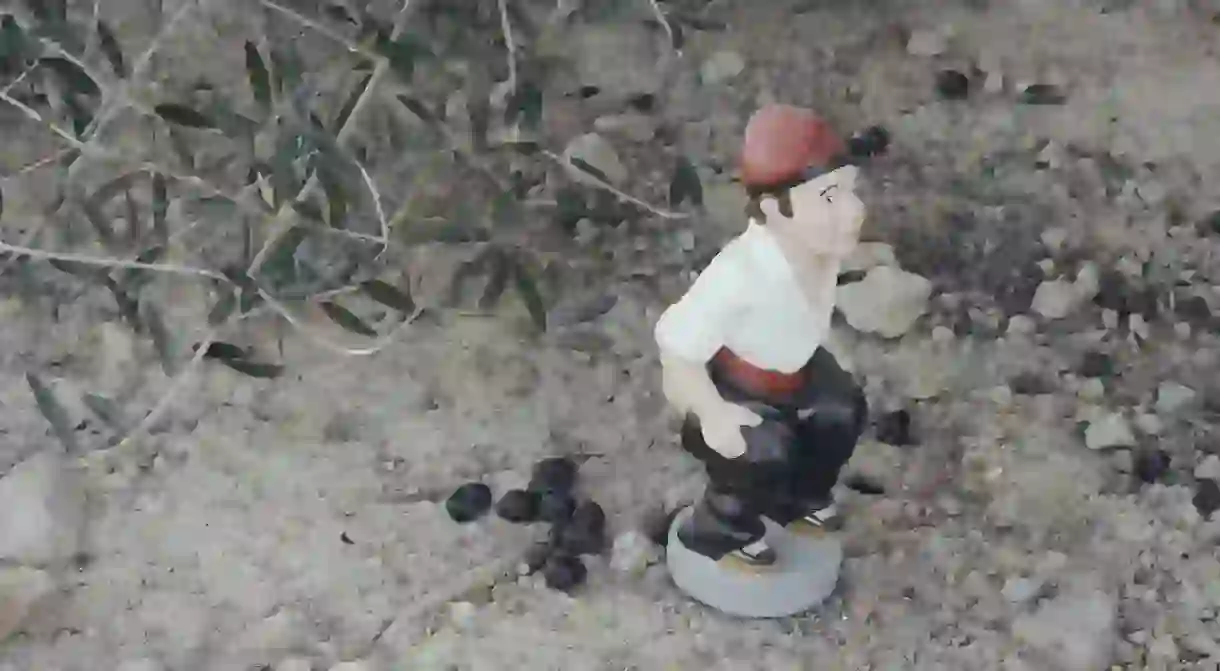What Is the Caganer, the 'Defecating' Catalan Christmas Figurine?

Take a wander around the Christmas markets in Catalunya and it won’t be long before you stumble across a caganer. This bare-bottomed, pooping figurine is considered by many here in Catalunya an essential feature of the traditional nativity scene, with attempts by the government to remove the caganer from public nativities causing widespread controversy. Find out more about this audacious Christmas guest so beloved to the Catalans.
What is a caganer?
The first encounter with a caganer can be quite a curious experience if you don’t know what to expect, and you really have to see it to believe it. This little figurine has his pants pulled down to his ankles as he bends over to produce his most noble of excretions. The caganer comes in a number of shapes and sizes, although traditionally he wears a white shirt and a traditional Catalan hat, known as a barretina.
The caganer is a regular feature of nativity scenes here in Catalunya, where he is believed to have started to appear around the early 18th century. Nativity scenes in Catalunya – known as pesebres – tend to represent pastoral scenes reminiscent of the local countryside, with large country houses and depictions of rural life. It is among these everyday scenes that the caganer tends to appear, crouched behind a building or a tree in the corner of the nativity.

Why is he pooping?
While the most defining quality of the caganer—which literally means ‘pooper’ in Catalan—is without a doubt the very natural task to which he devotes himself, there is no clear opinion on what the meaning of his action is. There are a number of plausible accounts of the significance of the caganer which are held with equal conviction by historians in the region.
One theory goes that the caganer simply represents fertility and the fertilization of the earth which yields food for us to eat. On this account, it’s a symbol of good luck and the wish for a prosperous new year and good health. Another explanation for why the figure appears in local nativity scenes is that he is said to represent the mischief and evil that is in all of us. Rather than denying or rejecting this natural disposition, the caganer is a way of accepting what each of us has in common. This view is echoed by some who see him as the contrast to the purity and good which appears in the rest of the nativity, adding a touch of balance to the whole.

The caganer today
While the traditional caganer appears with his white shirt and bonnet, nowadays you can find caganer depictions of everyone, from Barack Obama to Obi-Wan Kenobi, Michael Jackson to the Queen of England. These popular reinterpretations have become commonplace in recent years and have proven to be a popular souvenir with tourists around the holiday season. There are even serious collectors who have taken to searching out the latest caganer designs to add to their collection.
However, the caganer has also come under scrutiny in recent years, with certain authorities questioning whether the pooping figure was a suitable public display. In 2005 the local council of Barcelona decided to omit the caganer from the city’s public nativity scene, judging that it encouraged bad behavior in a city which has struggled with problems of public urination in the past. But the decision proved unpopular and many locals complained about what they saw as an attack on their cultural heritage. In 2006 the caganer was reinstated to his usual place among the wise men, the donkeys and the angels. It seems that, despite his unverified origins and dubious behavior, the caganer is here to stay.














